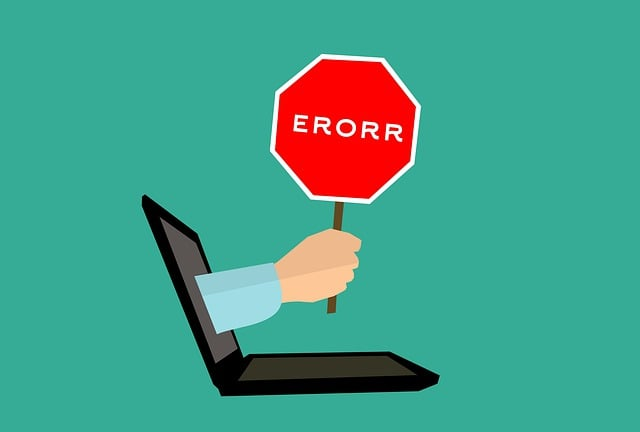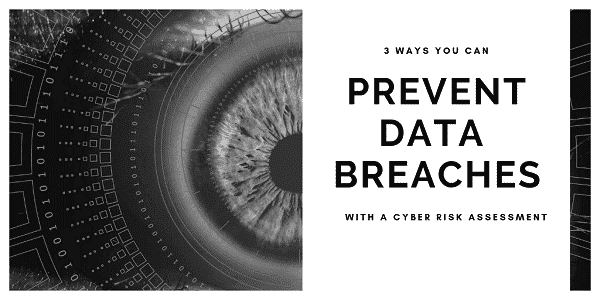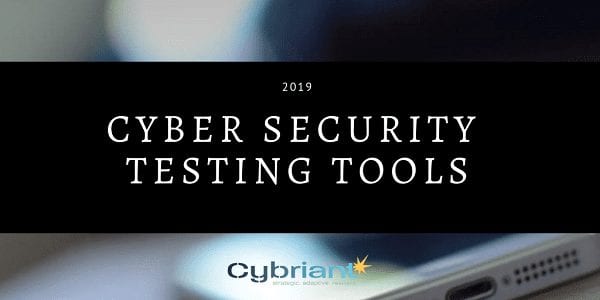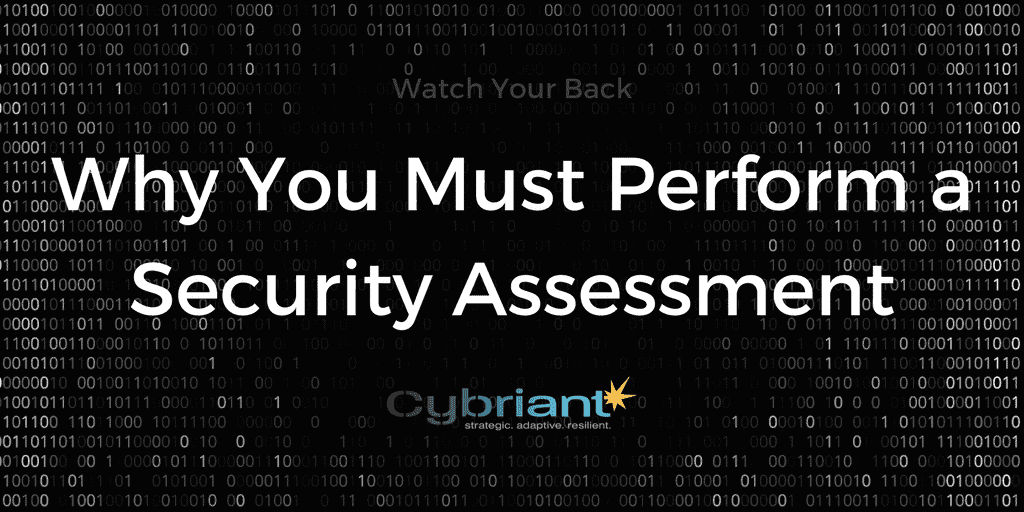Which cyber security testing tools should you use? Check out the list of the top tools our security experts are using.
Cyber attack is one of the nightmares of big companies. Keeping their confidential records from being hacked is their biggest concern. Banks, multinational corporations, and defense departments of every country are all at risk. This is the reason why most of them invested a lot in securing their computer system which resulted in employing cyber specialists and buying modern technology.
Cyber Security Testing
Cyber security testing is the process of assessing the security of a computer system or network. There are two main types of tests: penetration tests and vulnerability assessments. Penetration tests are designed to identify and exploit weaknesses in a system, while vulnerability assessments simply identify potential vulnerabilities.
Both types of tests can be used to assess security measures’ effectiveness and recommend improvements. Cyber security testing is an essential part of keeping systems and networks safe from attack.

Network Security Testing
Network penetration testing or security testing is the process of assessing the security of a computer system or network. This can be done through penetration tests and vulnerability assessments. Penetration tests are designed to identify and exploit weaknesses in a system, while vulnerability assessments simply identify potential vulnerabilities.
Both types of tests can be used to assess and test network security measures’ effectiveness and recommend improvements. Network security testing is an essential part of keeping systems and networks safe from attack.
Organizations should consider conducting regular cyber security tests to that their systems are protected from ever-evolving threats. Cybersecurity vulnerabilities can significantly impact businesses, so it is important to identify and address them as soon as possible using online network testing tools.
Web Application Security Testing
Web application security testing is the process of assessing the security of a web application. This can be done through penetration tests and vulnerability assessments. Penetration tests are designed to identify and exploit weaknesses in a system, while vulnerability assessments simply identify potential vulnerabilities.
Both types of tests can be used to assess security measures’ effectiveness and recommend improvements. Web application security testing is an essential part of keeping systems safe from attack.
What are some of the best tools for web application pentesting? There are many tools available for web application pentesting, but the most popular ones include Burp Suite, OWASP ZAP, Acunetix, and Metasploit.
When selecting the best tools for web application pen testing, organizations should consider a few key factors. First and foremost, they should choose a tool that is compatible with their systems and technologies. Additionally, the tool should be able to provide comprehensive tests that cover all areas of web application security. Finally, organizations should look for tools that can generate detailed reports as well as provide

Mobile Application Security Testing
Mobile application security testing is the process of assessing the security of a mobile application. This can be done through penetration tests and vulnerability assessments. Penetration tests are designed to identify and exploit weaknesses in a system, while vulnerability assessments simply identify potential vulnerabilities. Consider one of Cybriant’s online penetration testing tools – Automated Pen Test.
Both types of tests can be used to assess the effect of security measures’ effectiveness and improvements. Mobile application security testing is an essential part of keeping major operating systems, safe from attack.
Application Security Testing Tools
There are a variety of application security tools available for application security testing. Some of the most popular include:
· AppScan
· Arachni
· Burp Suite
· Fiddler
· HP WebInspect
· IBM Rational AppScan Standard Edition
· Paros Proxy
· Soap
UI
· Weburify
These tools can be used to test for a variety of security vulnerabilities, such as cross-scripting (XSS), SQL injection, and session hijacking. By using these tools, organizations can ensure that their applications are secure and free from attack.
Application Security Testing Services
Several companies offer application security testing services. These services can be used to assess the security of an organization’s applications and to recommend improvements. Some of the most popular application security testing services include:
· AppDetectivePro
· Cenzic Hailstorm
· IBM Rational AppScan
· Veracode
· WhiteHat Security Sentinel
These services can help organizations identify and fix vulnerabilities in their applications before they are exploited. By using these services, organizations can ensure that their applications are secure and free from attack.
Application security is critical for any organization that relies on web-based applications. By conducting regular security tests, organizations can ensure that their web browsers and applications are protected from attack.

Static Application Security Testing
Static application security testing is the process of assessing the security of applications that are not connected to a network. This can be done by analyzing the source code for vulnerabilities or by running penetration tests. Static application security testing is an essential part of keeping systems safe from attack.
Dynamic application security testing is the process of assessing the security of applications that are connected to a network.
Interactive Application Security Testing
Interactive application security testing is a type of security testing that is conducted by interacting with the application. This can be done through a web-based interface or by using a tool that simulates user input. Interactive application security testing is an essential part of keeping systems safe from attack.
API security testing is the process of assessing the security of an application programming interface (API).
Security Testing Tools
Cyber security is the reason for the birth of these many cyber security penetration testing tools. These tools are used by security experts to test every computer system for vulnerability to being hacked. These network penetration testing tools are designed for a different area of the system, checking its design and pinpointing the possible area of attack.
Here is a list of several security testing tools:
- Metasploit. A collection of penetration tools that are used by cyber security experts to manage security evaluations and discover vulnerabilities. It is used to evaluate the security condition of your infrastructure.
- NMAP. Otherwise known as a network mapper, this tool is used to monitor the host server and perform mapping of server vulnerability.
- Wireshark. It is a very handy tool that helps keep up with the real-time details, of every activity that transpires in your system. It is an analyzer and a sniffer, which helps assess the vulnerability of your network.
- Aircrack-ng. Set of utilities used to analyze the weakness of a WIFI network. It captures data packets and exports them to text files for analysis as a way of securing your WIFI network.
- John the Ripper. Traditional password is the most popular security risk, as cybercriminals tend to take advantage of this weakness. Hackers used these passwords to compromise the system, by putting on damage on it or stealing important information. Experts use this tool, to simulate an attack, and pinpoint its vulnerability.
- Nessus. It is a paid-for tool, used to scan for vulnerabilities in your system. Easy to use, it also provides fast and accurate scanning for your system. With just a click of a button, it can also provide you with a complete and accurate result of the weaknesses of your network.
- Burpsuite. Widely used, this is a utility to check the security of a web-based application. Consisting of various tools, it carries out different security tests. The tests include mapping the attack surface, analyzing requests and responses between servers, and many more.
These are just some of the widely known cyber security penetration tools, which are being used by cyber security experts, to secure important credentials of big companies and other important government agencies worldwide. It is up to the security experts, to determine, what types of network security tools and devices your system requires. These pen-testing tools will help you find security issues with your website or application.
Cyber security is a worldwide problem and unless this is addressed properly, every human and every business in this world, is at risk, of losing their vital information. This information can be used by these criminals or sell it to syndicates, to be used in their illegal activities.

Security Testing Tools: Penetration Testing
Penetration testing is a common user service to check the viability of your cyber security stems.
When a penetration test is launched, the aim is to carry out a risk assessment of your organization’s security system and controls. This is done by evaluating and picking out the parts of your security firewall that may be targeted by attackers. These parts are then subjected to an attack through a penetration test. When vulnerabilities in the security system are detected, the individual or company may then find out ways to eliminate the potential risk that may arise from these loopholes. This may be done by either getting rid of the defective systems or strengthening them to ensure that they are not exploited.
Read more about the 7 Reasons you need a Penetration Test in 2019.
The evolution of information technology is so fast, that everything is already dependent on computerization of everything. From business industries to governments in every country, they are all dependent on computers and the Internet. With this development, cyber and security professionals and experts are trying their best, to be able to find ways to protect the computer systems of big corporations, government agencies, and private individuals. The goal here is to keep their important information secured from being hacked.
What are these Security Penetration Testing tools?
Security Penetration Testing Tools are instruments that are used by cyber security experts, to check your computer system’s vulnerability to such cyber attacks. It is because of the fast evolution of computer technology, that system updates are inevitable. The computer system should be tested, to be able to determine, which part of the system is vulnerable. This is the reason for employing these security testing tools.
Here is a list of some popular Security Penetration Tools in addition to the tools listed above:
- Wifiphisher. This tool is an access point tool. Using a wifiphisher in the assessment will lead to actual infection of the system.
- Burp suite. This tool is best used with a web browser. This tool is essential to check applications of their functionality and security risks.
- OWASP ZAP. Another application tool, this one is better used for starters in application security.
- CME. This exploitation tool helps to automate assessing the security of large active directory networks.
- PowerSploit. It’s a set of modules to be used for assessments.
- Immunity Inc.-Debugger. This tool is used by security experts to write exploits, analyze malware, and a lot more features.
- THC-Hydra. A network log-in cracker, the tool holds several details to allow users to get started.
Pentest Automation Tool
A pentest automation tool is a software application that helps automate the process of conducting a penetration test. It can help with tasks such as scanning for vulnerabilities, managing test data, and reporting results. Some popular pentest automation tools include Nmap, Metasploit, and Burp Suite.
If you are unfamiliar with pen testing tools, it is recommended to go with an automated pen testing service. Security testers need years of experience as well as top-rated tools to find all vulnerabilities. Automated pen testing services use the latest technology and tools to run comprehensive tests and give you a report of their findings.
When looking for a pentest automation tool, it is important to consider what your specific needs are. Some tools are better suited for certain types of tests than others. For example, if you are looking for a tool to help with web application testing, Burp Suite would be a good option.
Once you have selected a few potential security tools, it is important to try them out and see which one works best for you. Some factors to consider include ease of use, price, and features. It is also important to make sure that the security tool you select is compatible with the operating system you are using.

When is it necessary to do the testing?
The frequency of testing varies for each team. It is up to the team’s life cycle and the availability of its application and resources. Key exercises can be performed within a life cycle, such as in the design mode, while others can take place in the implementation mode.
A wider internal network and application analysis requires the acceptance of the customer and is also done in the deployment phase of the project.
The methods used in penetration testing are:
- Internal Testing. Here, a tester that can access beyond the firewall will perform a system simulation attack.
- External Testing. This method targets company data that are visible on the web, such as the company’s website, emails, and servers.
- Blind Testing. Given only the name of the target, the tester gives security personnel a real-time scenario of an application assault.
- Double Blind Testing. Here in this method, security personnel has zero knowledge of the simulation, which makes them unprepared for such an eventuality.
- Targeted testing. This method shows teamwork between the tester and the security personnel, giving them a chance to hear from a hacker’s mindset.
Of course, if these tools aren’t familiar to you, penetration testing is a steep learning curve. It’s best to stick with a professional to do the work for you.
Cyber Security Software Tools
When it comes to protecting sensitive information and preventing cyber attacks, one of the most important tools in a company’s arsenal is cybersecurity software. Through software security testing and automated penetration testing software, these tools can detect vulnerabilities and prevent unauthorized access. They also offer additional features such as password management and encrypted data storage. However, finding the right cybersecurity software is not a one-size-fits-all process. It’s important to carefully analyze your company’s needs and choose a tool with the necessary level of protection. By investing in high-quality cybersecurity software, businesses can protect their information and reduce the risk of costly data breaches.
Automated Security Testing Tools
As the cyber security landscape continues to evolve, automated security testing tools are becoming an increasingly essential part of any organization’s cyber security arsenal.
Automated security testing tools can help to quickly and efficiently identify potential vulnerabilities in systems and applications, allowing organizations to address them before they can be exploited. Furthermore, automated security testing tools can also help to ensure that systems and cross-sites remain compliant with cyber security standards and regulations.
While no tool can eliminate all cyber security risks, automated security testing tools can play a vital role in helping organizations minimize their cyber security exposure. As such, cyber security testing experts typically recommend that organizations make use of these automated tools, as part of their cyber security strategy.
Some cybersecurity automation tools include:
1. Acunetix
2. Burp Suite
3. Rapid7 Nexpose
4. IBM AppScan
5. HP WebInspect
6. Microsoft Baseline Security Analyzer (MBSA)
7. OWASP Zed Attack Proxy (ZAP)
How to Perform Security Testing
Security testing is an important process for any web application. There are many ways to test for vulnerabilities, but one common method is cross-site scripting (XSS). XSS attacks exploit flaws in web applications that allow malicious code to be injected into the pages displayed to users.
This can allow attackers to steal sensitive information or take control of the victim’s browser. To perform manual security testing, developers can use a web browser’s built-in developer tools to examine the source code of a web page and look for potential vulnerabilities.
They can also use a web proxy like Burp Suite to intercept and modify traffic between the browser and the web server. By carefully examining the source code and traffic, developers can identify potential SQL injection flaws that could be exploited by attackers. By performing security testing, developers can identify vulnerabilities that can help protect their users from these kinds of attacks.
Security Testing Software
Security testing software will help you check for vulnerabilities in your systems and applications. It can also help you monitor for malicious activity and respond to incidents quickly.
Security testing software can be used to test for a variety of security risks, including:
– Buffer overflows
– SQL injection
– Cross-site scripting (XSS)
– Denial of service (DoS)
– Directory traversal
– File inclusion
– Privilege escalation
To effectively secure your systems and applications, it is important to test for all of these risks. Security testing software can help you do this by providing a comprehensive testing platform.
In addition to being used for security testing, security testing software can also be used for compliance testing. This type of testing is important for organizations that must meet certain security testing for all of these risks is an important card Industry Data Security Standard (PCI DSS).
Security testing software can help you check for vulnerabilities in your systems and applications. It can also help you monitor for malicious activity and respond to incidents quickly.
Software Security Testing
Software security testing is the process of assessing the security of a software program or system. It is a crucial step in developing secure software, as it can help to identify and fix security vulnerabilities. There are many different types of software security tests, but some common methods include pen testing, code reviews, and static analysis. Mobile app security testing is also becoming increasingly important, as more and more businesses rely on mobile apps to reach their customers. There are a variety of different tools and techniques that can be used for software security testing, and the best approach will vary depending on the type of software being tested and the specific security risks that need to be addressed. With so many options available, it is important to choose the right tools and methods for each project to ensure effective software security testing.
Software Security Testing Tools
Software security testing tools will help you check for vulnerabilities in your systems and applications. It can also help you monitor for malicious activity and respond to incidents quickly.
There are a variety of security risks that need to be tested for, including:
-buffer overflows
-SQL injection
-cross-site scripting (XSS)
-denial of service (DoS)
-directory traversal
-file inclusion
-privilege escalation.
To secure your systems and applications effectively, it is important to test for all of these risks. Security testing software can help you do this with its comprehensive testing platform.
Security testing software can also be used for compliance testing. This type of penetration testing tool is important for organizations that must meet certain security standards, such as those set by the Payment Card Industry Data Security Standard (PCI DSS).
With security testing software, you can check for vulnerabilities in your systems and applications, monitor for malicious activity, and respond to incidents quickly.

Automated Pen Testing Tools
Automated pen testing tools can be valuable to any organization’s risk management strategy. By running regular scans with these tools, companies can detect potential vulnerabilities and take steps to remediate them before they are exploited by malicious actors.
These tools also allow for more efficient and comprehensive penetration testing, allowing for risk reduction and avoidance. However, it is important to note that no tool can replace the expertise and judgment of a skilled security professional.
Automated pen testing should be used as part of a larger, well-rounded penetration testing toolkit. When used appropriately, these tools can greatly enhance an organization’s efforts to protect its systems and data.
Cyber security screening tools, such as Acunetix, are used to automatically scan websites and web applications for vulnerabilities.
Cyber security software testing tools like Metasploit and Burp Suite are used to test web applications for security vulnerabilities.
Acunetix is a web application security and vulnerability scanner, that automatically scans websites and web applications for vulnerabilities.
Metasploit is a penetration testing framework that can be used to test web applications for security vulnerabilities.

Risk Management Strategy
A risk management strategy is a plan of action that organizations put in place to identify, assess, and mitigate potential risks to their systems and data. By implementing a risk management strategy, companies can reduce the chances of a successful cyber attack and protect their valuable data.
There are a variety of different techniques that can be used as part of a risk management strategy, including vulnerability scanning, penetration testing, and many different types of risks that need to identify potential vulnerabilities before they are exploited by malicious actors.
It is important to note that no tool can replace the expertise and judgment of a skilled security professional. However, when used in combination with other risk management techniques, automated pen testing tools can be a valuable asset in protecting an organization’s systems and data.
Application Security Testing Software
Applicatiodefenseity testing software is a type of software that helps to check an app for potential vulnerabilities that could be exploited by hackers. It can also help with things such as monitoring for malicious activity, and responding to incidents quickly.
Application security testing software is important because many different types of risks need to be checked for. These include buffer overflows, SQL injection, cross-site scripting (XSS), denial of service (DoS), directory traversal, file inclusion, and privilege escalation.
To effectively secure your systems and applications, it is important to test for all of these risks. Application security testing software can help you do this by providing a comprehensive testing platform.
In addition to being a cyber defense tool, application security testing software can also be used for compliance testing. This type of network security testing tool is important for organizations that must meet certain security standards, such as those set by the Payment Card Industry Data Security Standard (PCI DSS).
Application security testing software will help you check for vulnerabilities in your systems and applications. It can also help you monitor for malicious activity, and respond to incidents quickly.

Software Composition Analysis
Your organization will require a software composition analysis to help determine which third-party components are in use and identify any security risks.
Third-party components are any software modules that are not developed by your organization. These could be libraries, frameworks, or even entire applications.
Using open-source components can save your organization time and money. However, it is important to vet these components carefully before using them.
Your software composition analysis will help you understand which third-party components are in use and identify any security risks. This information can then be used to make informed decisions about which components to use.
A software composition analysis is a type of analysis that helps to determine which third-party components are in use.
Application Seminary different types of risks need
An application security platform that will help assess and monitor the full security posture of your systems and applications.
An application security platform is a type of software that helps to assess and monitor the security of your operating systems, and applications.
The platform will typically include a range of tools that can be used for things such as vulnerability management, threat detection, and incident response.
Application Security Testing Tool
An application security testing tool is a type of software that helps to check an app for potential vulnerabilities that could be exploited by hackers.
The tool can also help with things such as monitoring for malicious activity, and responding to incidents quickly.
Application security testing tools are important because many different types of risks need to be checked for. These include buffer overflows, SQL injection, cross-site scripting (XSS), denial of service (DoS), directory traversal, file inclusion, and privilege escalation.
To effectively secure your systems, network traffic, and applications, it is important to test for all of these risks.

Conclusion: Security Testing Tools
There are many security testing tools on the market today. But none can match the experience of an educated and tested security team or individual penetration testers. Contact us for more questions about penetration testing and we can help connect you with a cyber security testing expert.
5 Key Reasons You Need a Cyber Security Assessment
Software Development Lifecycle
The software development life cycle (SDLC) is a set of processes and best practices used by developers and engineers to create high-quality software solutions. It typically starts with a plan for the project and continues through the design, development, testing, and deployment phases. Before the development team can start coding, they must first come up with an overall plan for the project. This stage is known as the initial planning stage.
Initial Planning Stage
The initial planning stage is where the team sets the scope of the project and comes up with an overall vision for the project. During this stage, the developers and engineers need to have a clear understanding of the purpose of the project, the goals they are trying to achieve, and the timeline they are working with. It is also important to decide on the architecture of the solution and the technologies that will be used. Some common tools used during the initial planning stage include flowcharts, mind maps, and project management software.
Design Phase
Once the initial planning stage is complete, the development team can move on to the design phase. During this phase, the team will create a detailed design document that outlines every feature, user story, and technical requirement of the project. This document will serve as a blueprint for the development team to follow. Common tools used during the design phase include wireframing software, user story mapping, and design Thinking.
Development Phase
The next step is the development phase, where the development team will write the code and build the software. During this phase, the team will need to use coding tools such as integrated development environments (IDEs) and source control management systems (SCMs). It is also important to collaborate with the project stakeholders to make sure the development process is on track.
bug-tracking
Once the software has been written, the development team will need to perform thorough testing to ensure the software is free from errors and works as expected. During the testing phase, the team will use tools such as automated testing frameworks, bug-tracking systems, and test management software. It is also important to perform usability testing to ensure that the final product is easy to use and meets the needs of the users.
Deployment Phase
The final step is the deployment phase, where the software is released to the public. During this phase, the development team will need to use deployment tools such as container orchestration platforms, software delivery pipelines, and deployment automation systems. It is also important to monitor the software after it is released to ensure it is performing as expected.
Potential Risks, Mitigation Measures and Testing Procedures
Throughout the entire SDLC process, there are potential risks that can arise that may affect the quality of the software. It is important to be aware of these risks and have plans in place to mitigate them. Some common risks include security issues, software bugs, and performance problems. To mitigate these risks, the development team should use security tools such as vulnerability scanners and code analysis tools, as well as testing tools such as unit tests and integration tests.
Application Security Tool Selection
When selecting an application security tool for your organization, it is important to consider the desired features and their capabilities. Depending on the size of your organization and the complexities of your system, some tools may be more appropriate than others.
One way to start researching application security tools is to review vendor websites and read customer reviews. This will give you an idea of the tool’s capabilities and its cost. It is also important to consider the security posture of your application or system, as well as any existing compliance requirements you may have.
It is recommended that you conduct a risk assessment prior to selecting an application security tool. This step will help ensure that the selected tool meets both your organization’s needs and any existing compliance requirements.
The selected tool should also be able to provide comprehensive testing capabilities, such as web application security scans and static code analysis. This type of testing can help detect potential vulnerabilities in your system and help you mitigate them to maintain a secure environment. Additionally, the tool should offer features like user access control, logging and audit trails, and reporting capabilities.
Finally, it is important to determine the level of support you need with your application security tool selection so that you can ensure any issues are addressed promptly and correctly. Having access to technical support or customer service teams can be beneficial when selecting an appsec testing tool for your organization.
Conclusion
For organizations looking to implement an automated pentesting solution, there are a number of reputable companies that offer such services. Choosing Cybriant as your automated pen testing provider offers the added benefit of our managed services, giving you access to expert security professionals who can help you get the most out of your pen testing solution.
Cybriant also offers a wide range of other cybersecurity solutions, including managed firewalls, antivirus protection, and vulnerability scanning. With our comprehensive suite of services, Cybriant can help you protect your organization from the latest threats in cybersecurity.
Furthermore, Cybriant is a SOC 2 Type 2 certified company, ensuring that we adhere to the highest standards of security and privacy for our customers. With 24/7 customer support and an experienced team of professionals available to assist you with any questions or concerns, Cybriant can provide you with the peace of mind that your organization’s data and systems are in safe hands.
Whether you’re looking for an automated pen testing solution, top rated penetration service providers, or a comprehensive suite of cybersecurity services, Cybriant is here to help. Get in touch today to find out how we can help your organization stay secure from the latest threats in cyber security.




















